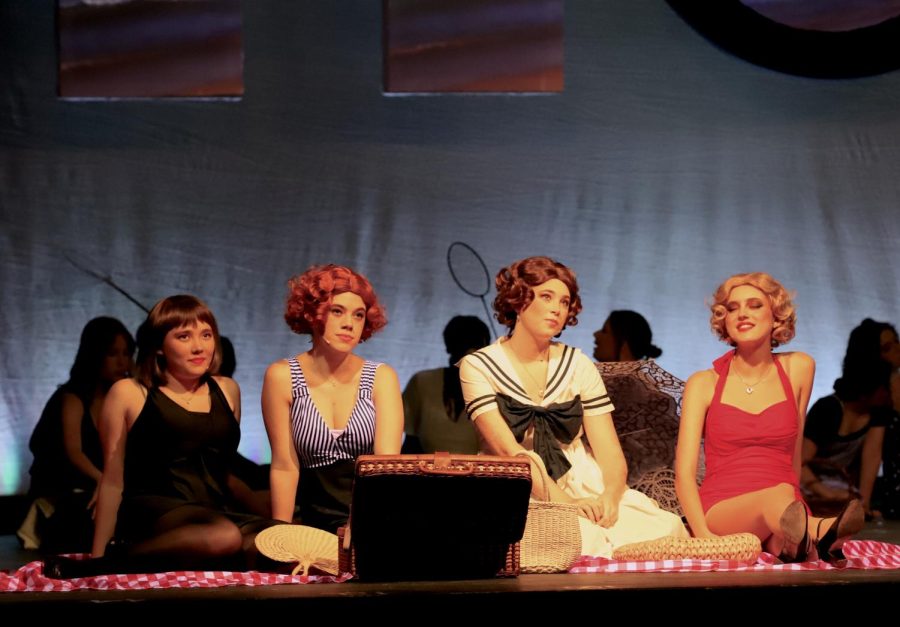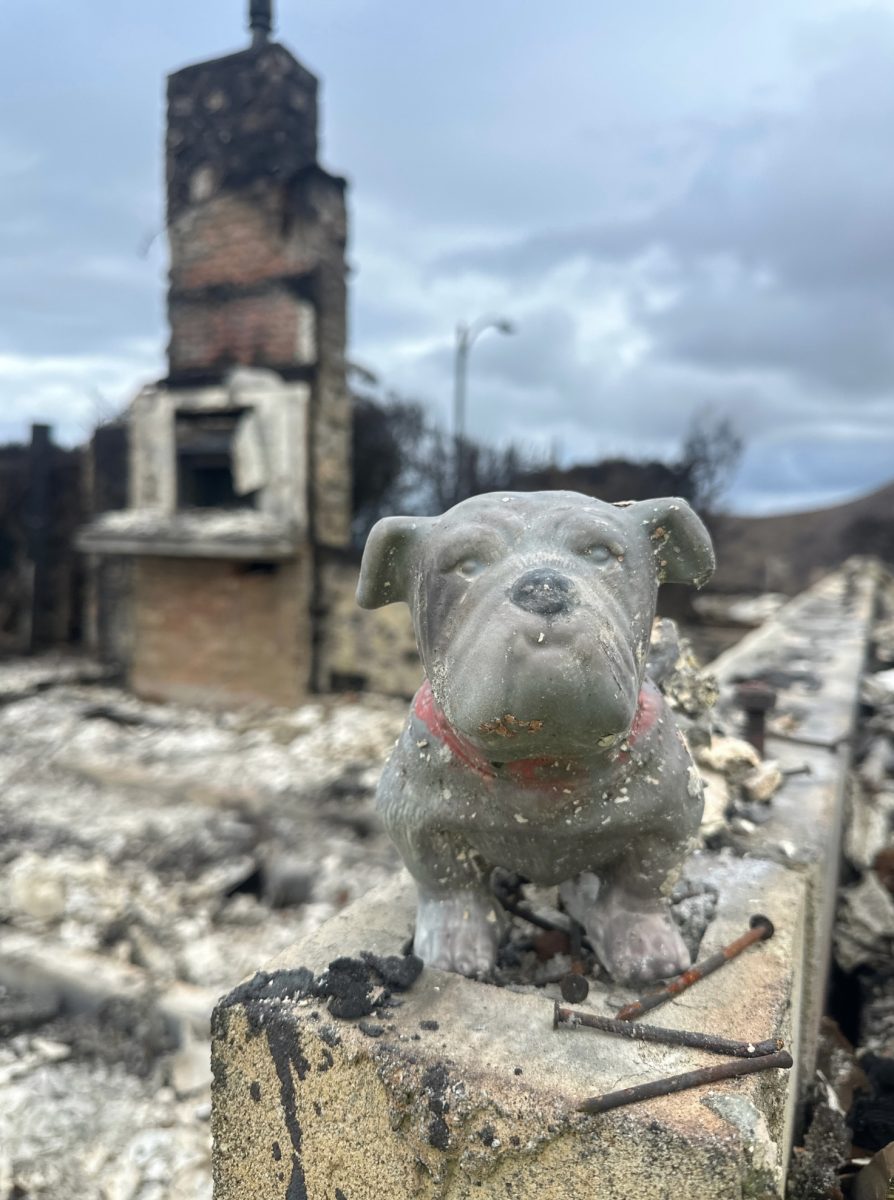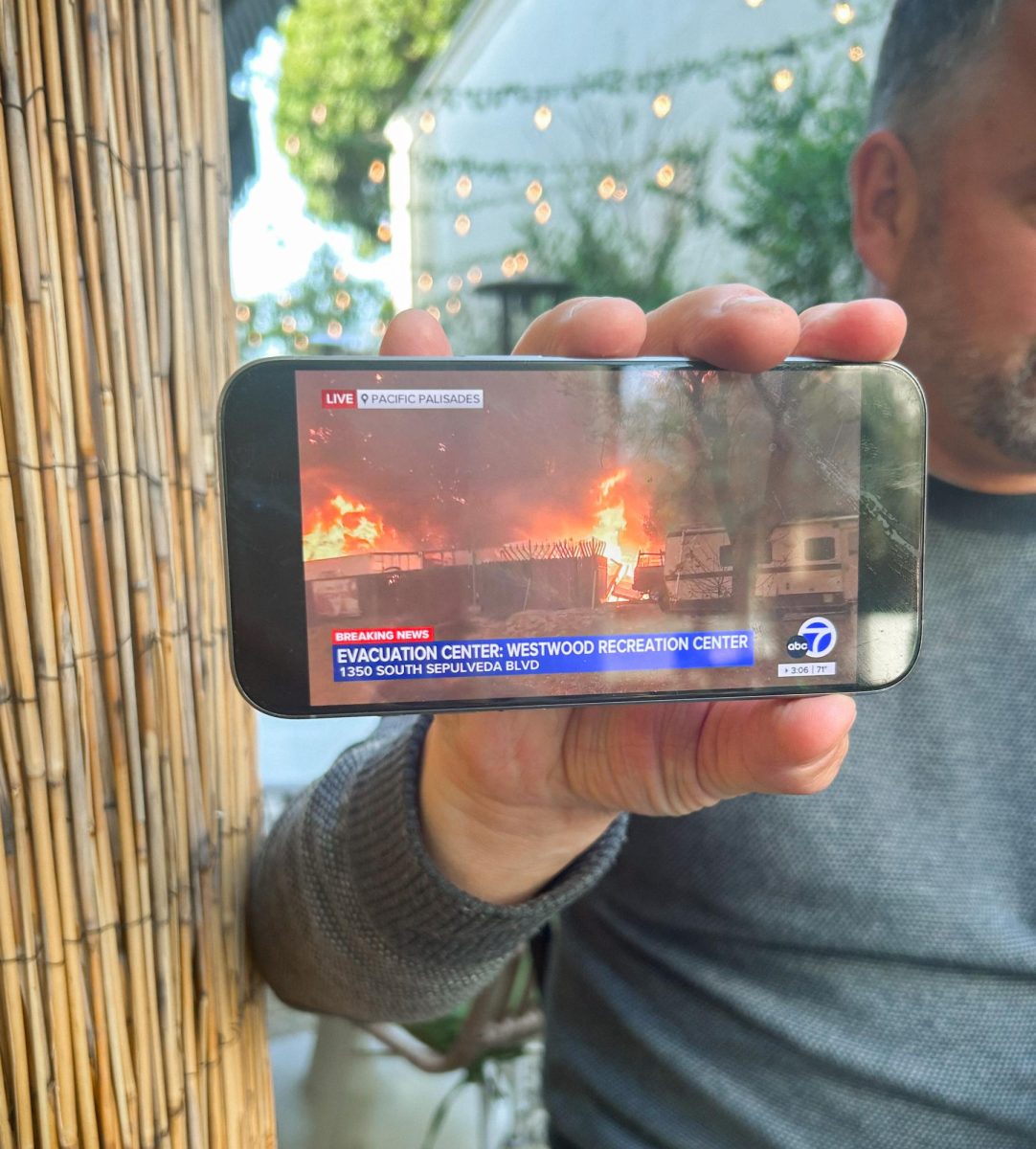Theater Review: These Women Shine a Light on Workplace Hazards, Injustices
November 29, 2022
Pali’s production of “These Shining Lives” opened many eyes in the audience to the mistreatment of women and their health in the 1930s workforce. Neglected and ignored, the women in this play lost their lives to the career that they once loved. After the curtain call, I was left wondering why this was the first time I had heard about this.
“These Shining Lives,” written by Melanie Marnich and premiered in 2008, details the true story of the female factory workers painting watches at the company Radium Dial in 1930s Ottawa, Ill. Directed by Cheri and Monique Smith, the play follows the lives of Catherine Donohue (Kaela Tagliaferro), Charlotte Purcell (Evangeline Lindes), Francis O’Connell (Marley Blanchard) and Pearl Payne (Ginger Simpson). These watches promised to glow in the dark because of a special substance used to paint the numbers on the watches — radium. The company assured its workers that the element was safe, therefore many of the women, known as the “Radium girls,” twirled the paintbrushes in their mouths to sharpen the end. Then, many of the women in the factory began to glow from the inside out and develop aches in their hands, arms, jaws and legs. When they attempted to vocalize their pain, the company turned a blind eye, leading to worsening health conditions and the eventual diagnosis of their radium poisoning. Donohue brought a class action suit against the company and was awarded $5,661 by the Supreme Court after multiple appeals. The Radium girls’ court case and story blazed a trail for workers to fight for safer working conditions.
This play sheds light on the lack of concern for working class women in the early 20th century as they were seen as expendable laborers. What I found most upsetting about the story is that the situation could have been prevented if the company leaders acknowledged that the radium had adverse effects on the workers. Instead, each woman’s pain was dismissed, and they were told to take Aspirin for relief.
This treatment conveys the systematic disregard for the well-being of working women by profit-hungry companies in the 1930s.
The Radium girls each produced hundreds of painted watch faces each day, but at what cost? Women like Donohue came to weigh only about 70 pounds and lost jaw bones and teeth soon before their death. No amount of money could compensate for the trauma they endured.
Ironically, though companies like Radium Dial were responsible for women missing increasing days of work due to their condition, their absence was also used as a reason to lay them off. The company viewed the women as not worth their time or attention because they could hire new, healthier workers as replacements who were unaware of radium and its detrimental effects. While these women are the primary focus of this story, countless others could relate to the invalidation of their intensifying chronic health issues and the indifference to their pain at the hands of large companies.
As I watched the play, I was amazed by the actors who dramatically expressed the Radium girls’ emotions, specifically their frustration. During the production, the women transitioned from being young and cheerful to decaying and drained. I reacted with their same anger when they found out that they were being poisoned during their entire career at the company. I could tell that the history of the setting and characters were thoroughly researched by the actors.
The ambience made me feel like I had been transported to the 1930s, with the historical accuracy of the costumes and the record player that played soft jazz in the background of several scenes. The costumes ranged from overalls and workwear to delicate dresses and crisply pressed suits. The backdrop displaying a large glow-in-the-dark clock with hands that moved according to the time of day in the play created an immersive experience. The dancing was creative, and the Baz Luhrmann-esque music encapsulated 1930s culture with modern music styles.
In one particular scene, the main characters confided in each other that their skin glowed yellow in the dark (later they would find out that this was a result of having ingested radium). Dancers suddenly emerged on the stage, performing to “Radioactive” by Imagine Dragons. The dancers tossed a glowing powder around them, and purple lights illuminated glowing handprints on their costumes. This unique, imaginative interpretation of this moment in the play conveyed the stress, chaos and sense of doom for the women. It also marked the point in the play where the tone became much more dreary.
Junior Kaela Tagliaferro said that making the play a faithful representation of the story of the four women was one of the main priorities.
“I feel like it’s difficult to do something creative like this for a true story,” Tagliaferro said. “It’s important to find that balance where we could input our own creative ideas into production of the show while still being respectful.”
The cast achieved this balance of making an original play while also accurately portraying the women. The production evoked emotions ranging from shock, sadness and anger to joy and anticipation. I believe these components comprise a play that is both intriguing to the audience and recounts history correctly.
Assistant stage manager Kian Zerehi, a senior, said that his favorite part of putting on a play is “to see how we improve so quickly… As much as some things can be last minute, at the end of the day, the moment where we’re backstage, we all work so well with each other, no matter what you’re contributing to the show and if you’re on an ensemble or crew or if you’re a lead.”
Tagliaferro added that she hopes audiences will take something away from the performance.
“I feel like it’s just such a lost part of our history that’s really important,” Tagliaferro said. “These women suffered, and we need to do them justice. I think it’s really important to share their story, so I hope people will understand the weight of the play.”













